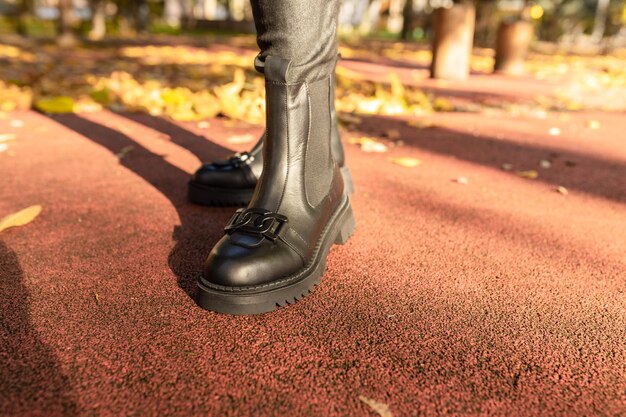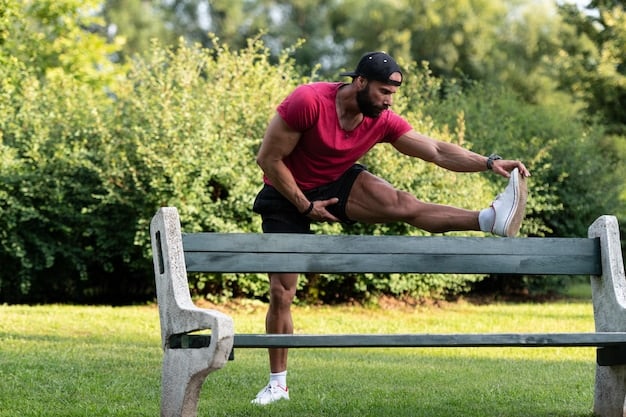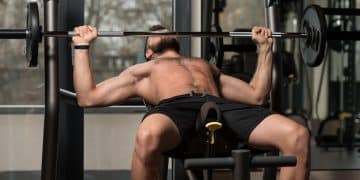Running for Weight Loss: The Ultimate Beginner’s Guide

Running for Weight Loss: The Ultimate Beginner’s Guide provides a comprehensive overview for individuals starting their weight loss journey through running. This guide covers essential aspects such as creating a running plan, nutrition tips, and injury prevention strategies.
Embarking on a fitness journey can be daunting, but running emerges as an accessible and effective method for shedding those extra pounds. Are you ready to transform your health and physique with the power of running? This guide will explain why this could be the best decision you make this year.
Welcome to Running for Weight Loss: The Ultimate Beginner’s Guide. We’ll explore the fundamental aspects of incorporating running into your weight loss strategy, ensuring you start safely and sustainably.
Running for Weight Loss: The Ultimate Beginner’s Guide
Running is a fantastic way to burn calories, improve cardiovascular health, and boost your mood. If you’re new to running and looking to lose weight, this guide will provide you with the essential knowledge and tools to get started. Let’s dive into how you can effectively use running as a cornerstone of your weight loss plan.
Why Running is Effective for Weight Loss
Running is a high-impact exercise that burns a significant number of calories in a relatively short amount of time. Additionally, it helps to boost your metabolism, making it easier to lose weight and maintain a healthy weight over time. Let’s talk about some of the key advantages.
- High Calorie Burn: Running burns more calories per hour than many other forms of exercise.
- Metabolism Boost: Regular running can increase your resting metabolic rate, helping you burn more calories even when you’re not exercising.
- Cardiovascular Health: Running improves heart health by lowering blood pressure and cholesterol levels.
- Mental Wellbeing: Running releases endorphins, which can help reduce stress and improve mood, supporting your weight loss journey mentally.
Starting a running routine doesn’t require expensive gym memberships or complicated equipment. With just a good pair of shoes and a safe place to run, you can begin your journey toward a healthier you. This accessibility makes running an ideal choice for many beginners looking to lose weight.

Creating Your Running Plan
A structured running plan is crucial for beginners to avoid injury and ensure consistent progress. Starting slow and gradually increasing your mileage is key. Here’s how to create a running plan tailored to your fitness level.
Start with a Walk-Run Strategy
If you’re new to running, begin with a walk-run strategy. This involves alternating between walking and running intervals. For example, you might start with a 5-minute walk, followed by 1 minute of running, and repeat this cycle for 20-30 minutes. Gradually increase the running intervals and decrease the walking intervals as your fitness improves.
Sample Beginner Running Schedule
- Week 1: Walk for 5 minutes, run for 1 minute, repeat for 20 minutes, 3 times a week.
- Week 2: Walk for 3 minutes, run for 2 minutes, repeat for 25 minutes, 3 times a week.
- Week 3: Walk for 2 minutes, run for 3 minutes, repeat for 30 minutes, 3 times a week.
- Week 4: Walk for 1 minute, run for 4 minutes, repeat for 35 minutes, 3 times a week.
Consistency is more important than intensity, especially when you’re just starting. Focus on completing your scheduled runs each week and gradually increasing the duration and intensity. Remember to listen to your body and take rest days when needed. Proper warm-up and cool-down routines can also prevent injuries and improve performance.
Nutrition Tips for Running and Weight Loss
Running for weight loss isn’t just about exercise; nutrition plays a vital role. Eating a balanced diet that supports your running routine is essential for achieving your weight loss goals. Let’s explore some key nutritional strategies for runners.
Fueling Your Runs
Proper nutrition can significantly impact your energy levels and performance during runs. What you eat before, during, and after your runs can affect your weight loss goals. Here’s are some important things to consider.
Pre-Run Nutrition
Before a run, focus on consuming easily digestible carbohydrates to fuel your muscles. Some good options include:
- Banana with a tablespoon of peanut butter
- Oatmeal with berries
- Whole grain toast with avocado
Post-Run Nutrition
After a run, it’s important to replenish your glycogen stores and repair muscle tissue. Aim for a combination of carbohydrates and protein, such as:
- Protein shake with fruit
- Greek yogurt with granola
- Chicken breast with sweet potato
Staying hydrated is also crucial for runners. Drink plenty of water before, during, and after your runs to prevent dehydration and maintain performance. Avoiding processed foods, sugary drinks, and excessive amounts of saturated fats can further support your weight loss efforts. A well-planned diet complements your running routine, maximizing weight loss and improving overall health.
Choosing the Right Running Gear
Having the right running gear can make a significant difference in your comfort, performance, and injury prevention. Investing in essential items like proper shoes, comfortable clothing, and accessories can enhance your running experience. Let’s explore the must-have gear for runners.
Essential Running Shoes
The most important piece of equipment is a good pair of running shoes. Visit a specialty running store to get fitted for shoes that match your foot type and running style. Proper shoes can absorb impact, provide support, and prevent injuries. Consider these factors when selecting running shoes:
- Foot Type: Determine if you have neutral, pronated, or supinated feet.
- Cushioning: Choose shoes with adequate cushioning to absorb impact.
- Fit: Ensure the shoes fit comfortably and provide enough room in the toe box.
Comfortable Running Clothes
Wear comfortable, moisture-wicking clothing to stay dry and prevent chafing. Avoid cotton, which can become heavy and uncomfortable when wet. Consider these clothing options:
- Shorts or Leggings: Choose breathable, flexible fabrics.
- T-Shirts or Tank Tops: Opt for moisture-wicking materials.
- Socks: Wear running-specific socks to prevent blisters.
Other helpful accessories include a running watch to track your distance and pace, a water bottle or hydration pack to stay hydrated, and reflective gear for running in low-light conditions. Prioritizing the right gear ensures a more enjoyable and safer running experience, helping you stay consistent on your weight loss journey. Proper gear helps reduce the risk of injuries while performing the Running for Weight Loss: The Ultimate Beginner’s Guide.

Preventing Injuries While Running
Injury prevention is crucial for maintaining a consistent running routine and achieving your weight loss goals. Common running injuries can be avoided by following proper techniques and taking preventive measures. Here’s how to minimize your risk of injury:
Warm-Up and Cool-Down
Always start with a warm-up to prepare your muscles for exercise and end with a cool-down to help your body recover. Effective warm-up and cool-down routines include:
- Warm-Up: 5-10 minutes of light cardio, such as jogging in place, followed by dynamic stretches like leg swings and arm circles.
- Cool-Down: 5-10 minutes of light cardio, followed by static stretches, holding each stretch for 20-30 seconds.
Proper Running Form
Maintaining good running form can reduce the impact on your joints and prevent injuries. Focus on the following tips:
- Posture: Stand tall with a slight lean forward from the ankles.
- Stride: Avoid overstriding by landing with your foot beneath your hips.
- Arm Movement: Keep your arms bent at a 90-degree angle and swing them forward and back, not across your body.
Listening to your body and addressing any pain or discomfort early on can prevent minor issues from becoming major injuries. Stretching regularly, incorporating strength training, and paying attention to your body’s signals are essential for injury prevention. Staying proactive about your health ensures a sustainable and enjoyable running experience, supporting your weight loss journey. This is a key concept when Running for Weight Loss: The Ultimate Beginner’s Guide.
Staying Motivated on Your Running Journey
Staying motivated is essential for sticking to your running routine and achieving long-term weight loss success. Setting realistic goals, tracking your progress, and finding ways to make running enjoyable can help you stay on track. Let’s explore some strategies for maintaining motivation.
Set Realistic Goals
Start with small, achievable goals and gradually increase the challenge as you progress. Celebrate your successes along the way to stay motivated. Set these goals:
- Short-Term Goals: Focus on completing a certain number of runs each week or increasing your mileage gradually.
- Long-Term Goals: Aim for a specific weight loss target or a race completion goal.
Track Your Progress
Keeping track of your runs can provide a sense of accomplishment and help you stay motivated. Use a running app or journal to record your distance, time, and pace. Celebrate each goal you hit.
- Running Apps: Use apps like Strava or Runkeeper to track your runs and monitor your progress.
- Running Journal: Record your runs, including distance, time, and how you felt during the run.
Remember to reward yourself for reaching milestones, whether it’s a new pair of running shoes or a relaxing massage. Finding a running buddy or joining a running group can provide additional support and motivation. Staying consistent and enjoying the process are key to making running a sustainable part of your weight loss journey and overall lifestyle. When Running for Weight Loss: The Ultimate Beginner’s Guide is used correctly, anyone can stay motivated.
| Key Point | Brief Description |
|---|---|
| 👟 Proper Gear | Invest in good running shoes to prevent injuries and enhance comfort. |
| 🍎 Nutrition | Focus on balanced meals with carbs and protein pre- and post-run. |
| 🏃♀️ Gradual Plan | Start slowly with walk-run intervals to build endurance gradually. |
| 💪 Motivation | Set realistic goals, track progress, and find a running buddy for support. |
Frequently Asked Questions
Start with three runs per week, with rest days in between to allow your body to recover. Gradually increase frequency as you become more comfortable and build endurance.
Before a run, consume easily digestible carbohydrates like a banana, oatmeal, or whole grain toast. These provide sustained energy for your workout.
Yes! Running is very effective for burning calories and boosting your metabolism. Combine it with a balanced diet for optimal weight loss results.
Stretching before and after running is essential for preventing injuries and improving flexibility. Focus on stretching major muscle groups like hamstrings and quads.
Invest in a good pair of running shoes that fit well and provide adequate cushioning. Visit a specialty running store for a professional fitting.
Conclusion
Incorporating running into your weight loss plan can be a rewarding and effective way to achieve your fitness goals. This Running for Weight Loss: The Ultimate Beginner’s Guide equipped you with the tools to begin safely and sustainably.
Start slowly, stay consistent, and enjoy the journey toward a healthier and happier you. Remember to listen to your body, be patient with your progress, and celebrate every milestone along the way for long-term success.





